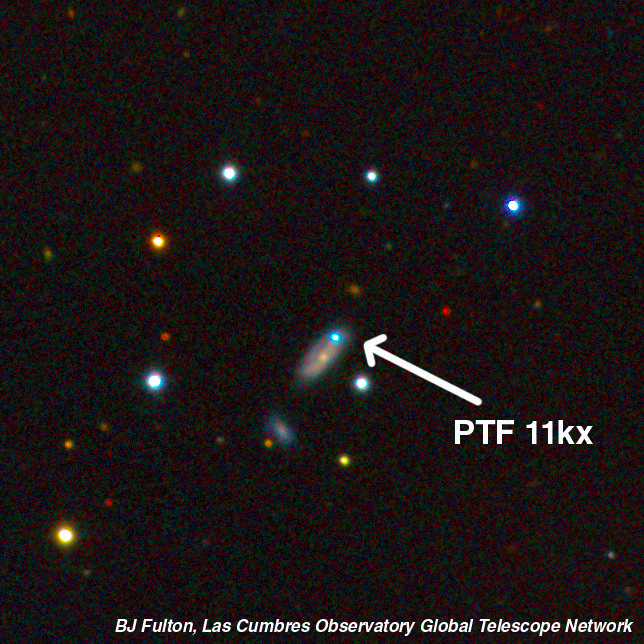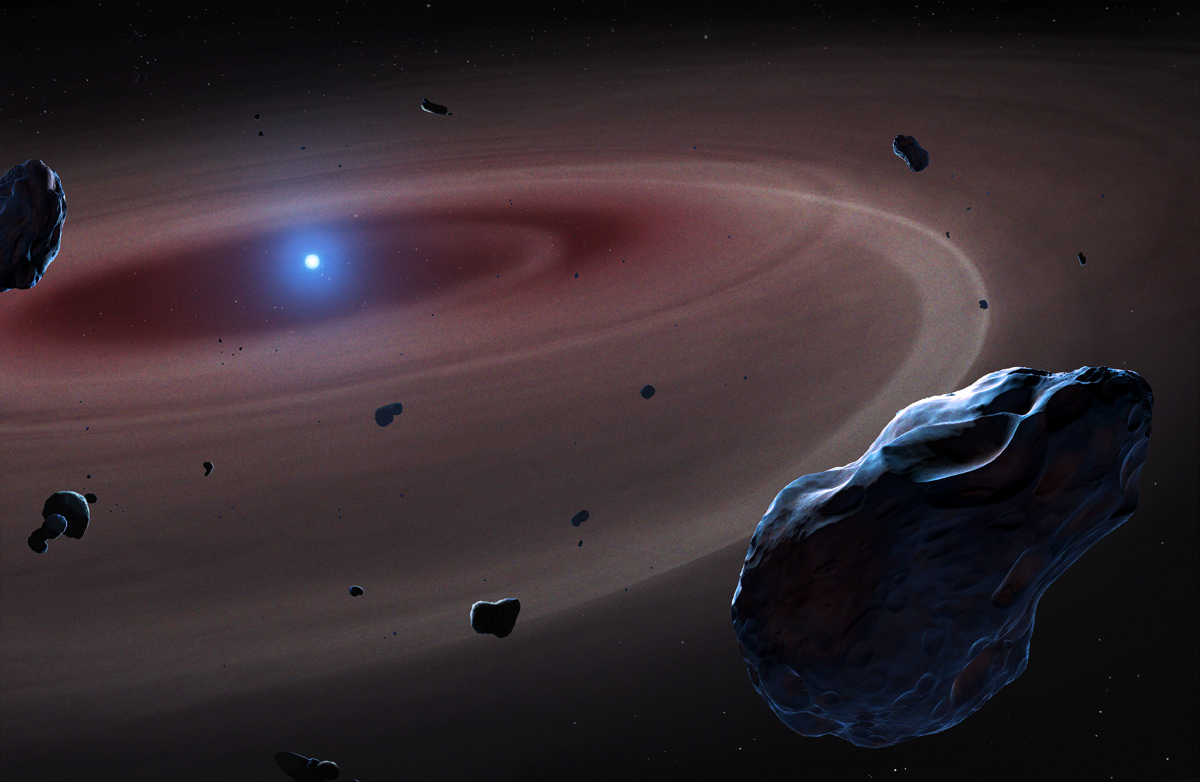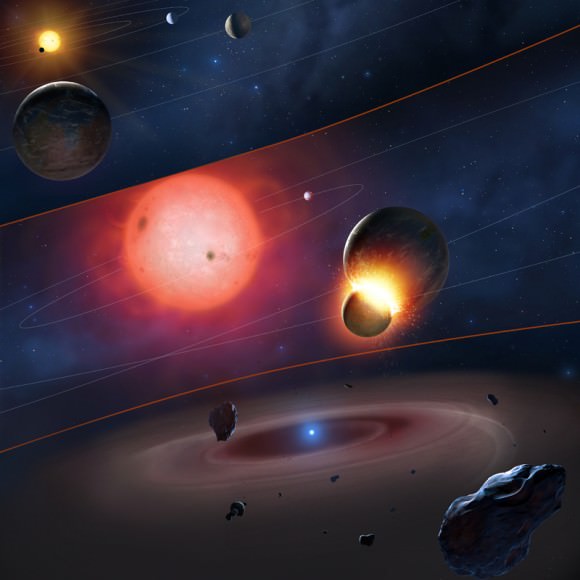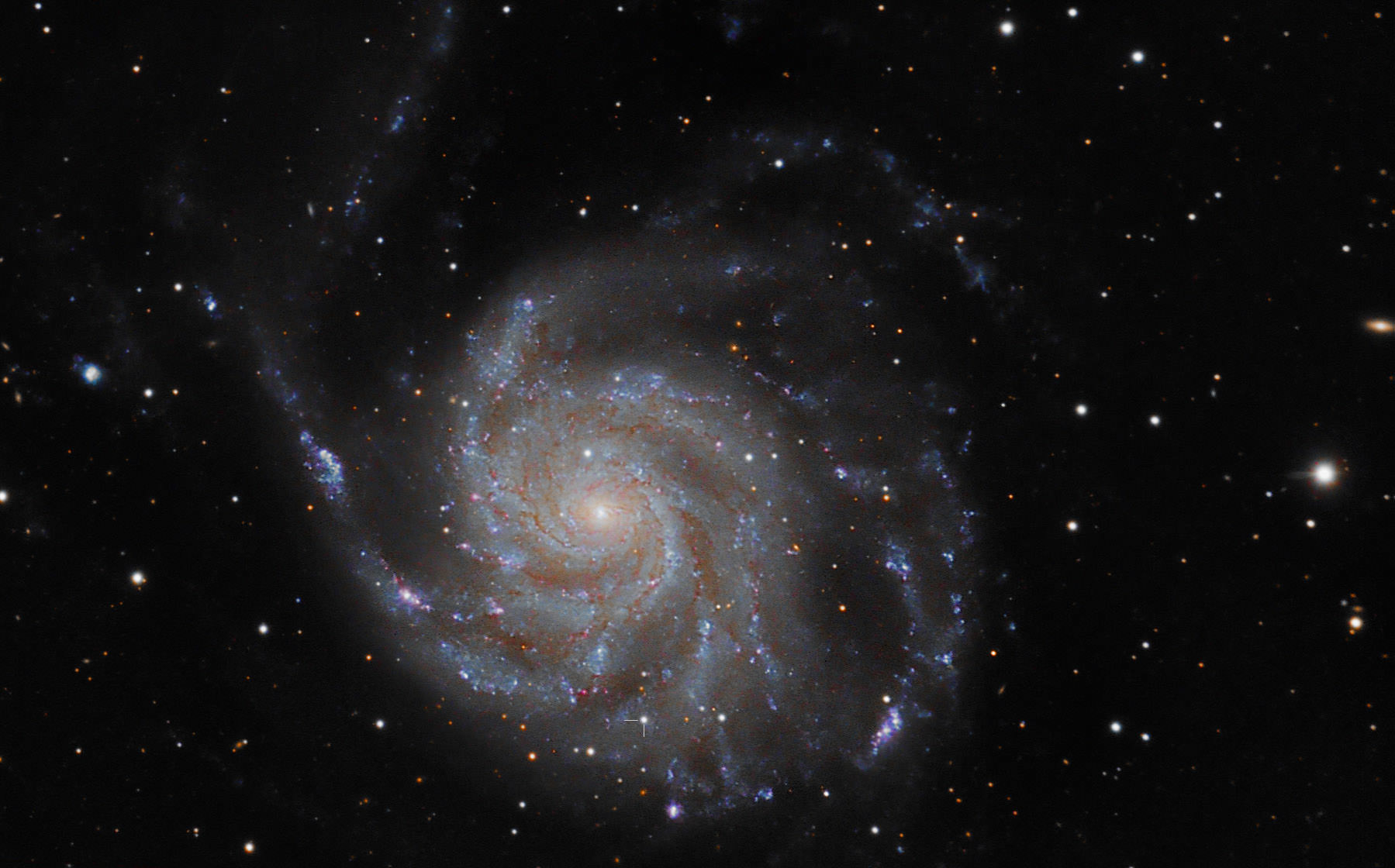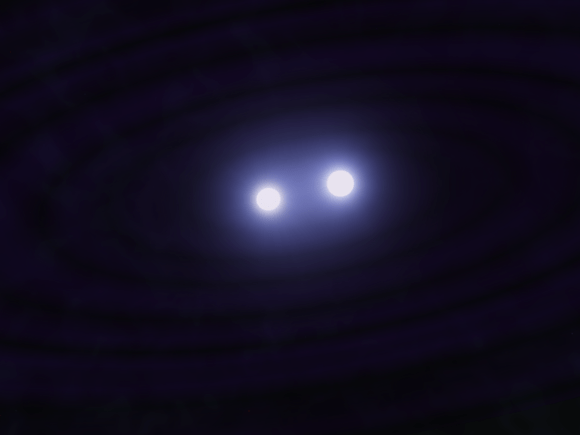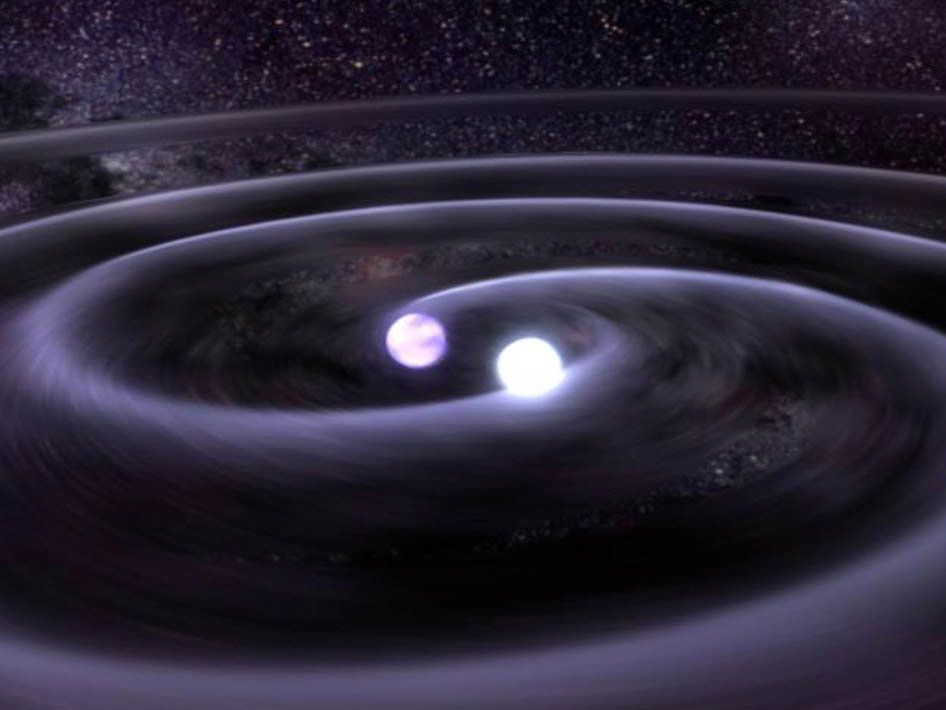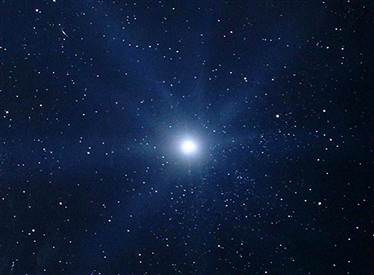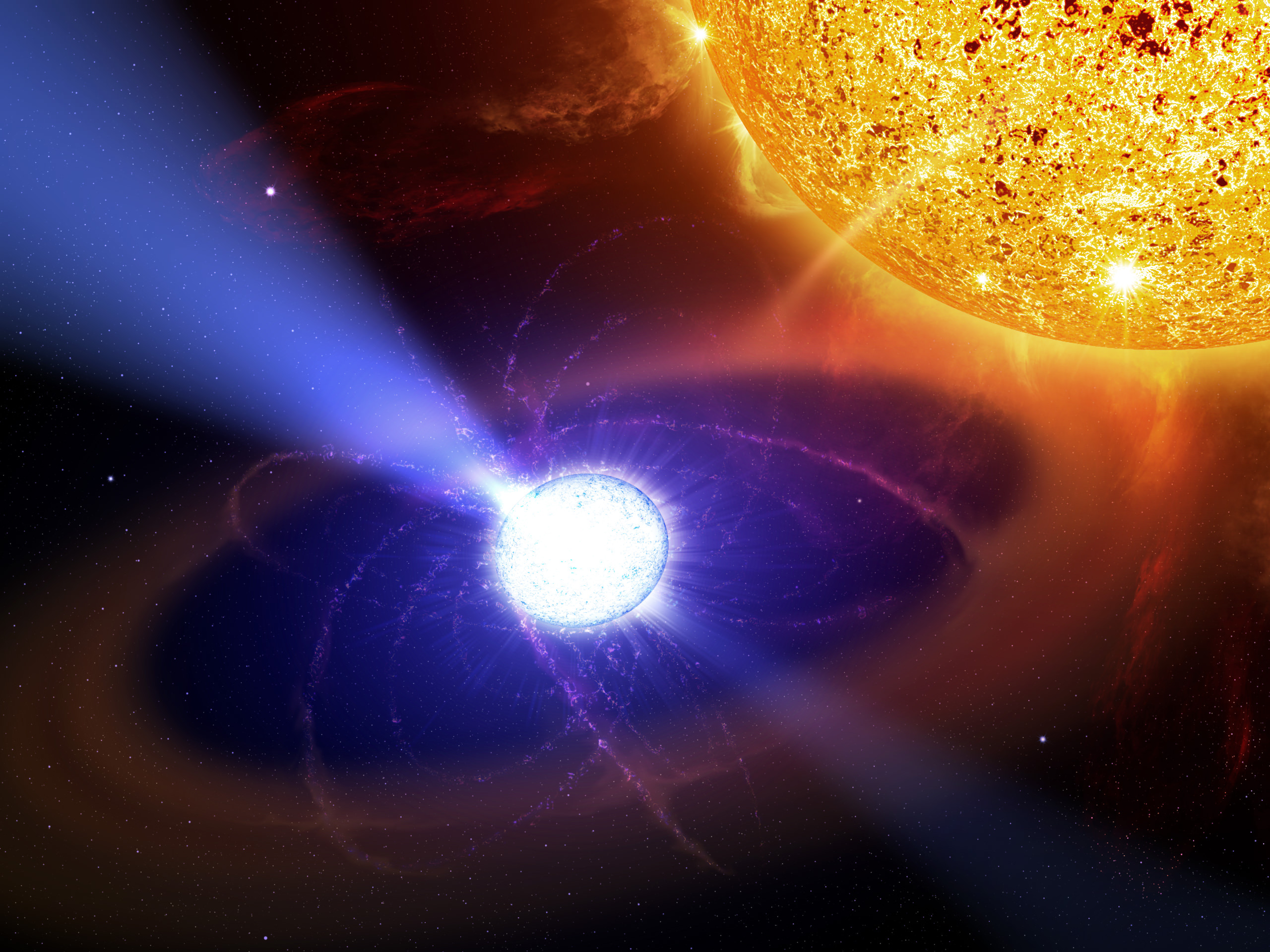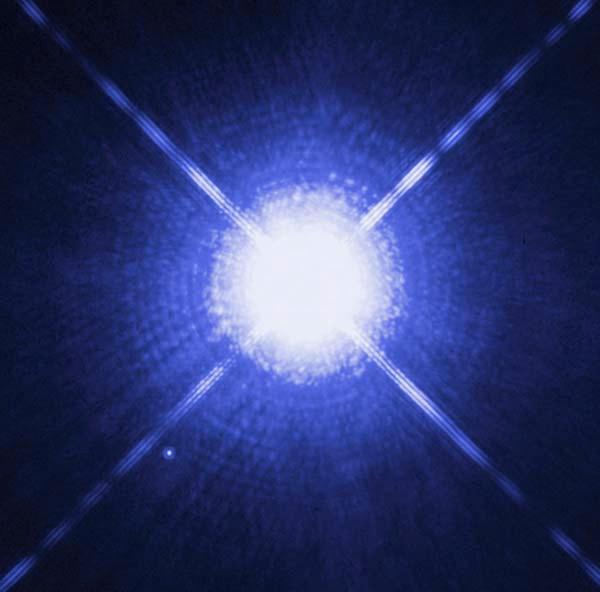Artist’s conception of a binary star system that produces recurrent novae, and ultimately, the supernova PTF 11kx. (Credit: Romano Corradi and the Instituto de Astrofísica de Canarias)
Although they have been used as the “standard candles” of cosmic distance measurement for decades, Type Ia supernovae can result from different kinds of star systems, according to recent observations conducted by the Palomar Transient Factory team at California’s Berkeley Lab.
Judging distances across intergalactic space from here on Earth isn’t easy. Within the Milky Way — and even nearby galaxies — the light emitted by regularly pulsating stars (called Cepheid variables) can be used to determine how far away a region in space is. Outside of our own local group of galaxies, however, individual stars can’t be resolved, and so in order to figure out how far away distant galaxies are astronomers have learned to use the light from much brighter objects: Type Ia supernovae, which can flare up with a brilliance equivalent to 5 billion Suns.
Type Ia supernovae are created from a special pairing of two stars orbiting each other: one super-dense white dwarf drawing material in from a companion until a critical mass — about 40% more massive than the Sun — is reached. The overpacked white dwarf suddenly undergoes a rapid series of thermonuclear reactions, exploding in an incredibly bright outburst of material and energy… a beacon visible across the Universe.
Because the energy and luminance of Type Ia supernovae have been found to be so consistently alike, distance can be gauged by their apparent brightness as seen from Earth. The dimmer one is when observed, the farther away its galaxy is. Based on this seemingly universal similarity it’s been thought that these supernovae must be created under very similar situations… especially since none have been directly observed — until now.
An international team of astronomers working on the Palomar Transient Factory collaborative survey have observed for the first time a Type Ia supernova-creating star pair — called a progenitor system — located in the constellation Lynx. Named PTF 11kx, the system, estimated to be some 600 million light-years away, contains a white dwarf and a red giant star, a coupling that has not been seen in previous (although indirect) observations.
“It’s a total surprise to find that thermonuclear supernovae, which all seem so similar, come from different kinds of stars,” says Andy Howell, a staff scientist at the Las Cumbres Observatory Global Telescope Network (LCOGT) and a co-author on the paper, published in the August 24 issue of Science. “How could these events look so similar, if they had different origins?”
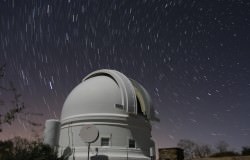 The initial observations of PTF 11kx were made possible by a robotic telescope mounted on the 48-inch Samuel Oschin Telescope at California’s Palomar Observatory as well as a high-speed data pipeline provided by the NSF, NASA and Department of Energy. The supernova was identified on January 16, 2011 and supported by subsequent spectrography data from Lick Observatory, followed up by immediate “emergency” observations with the Keck Telescope in Hawaii.
The initial observations of PTF 11kx were made possible by a robotic telescope mounted on the 48-inch Samuel Oschin Telescope at California’s Palomar Observatory as well as a high-speed data pipeline provided by the NSF, NASA and Department of Energy. The supernova was identified on January 16, 2011 and supported by subsequent spectrography data from Lick Observatory, followed up by immediate “emergency” observations with the Keck Telescope in Hawaii.
“We basically called up a fellow UC observer and interrupted their observations in order to get time critical spectra,” said Peter Nugent, a senior scientist at the Lawrence Berkeley National Laboratory and a co-author on the paper.
The Keck observations showed the PTF 11kx post-supernova system to contain slow-moving clouds of gas and dust that couldn’t have come from the recent supernova event. Instead, the clouds — which registered high in calcium in the Lick spectrographic data — must have come from a previous nova event in which the white dwarf briefly ignited and blew off an outer layer of its atmosphere. This expanding cloud was then seen to be slowing down, likely due to the stellar wind from a companion red giant.
(What’s the difference between a nova and a supernova? Read NASA’s STEREO Spots a New Nova)
Eventually the decelerating nova cloud was impacted by the rapidly-moving outburst from the supernova, evidenced by a sudden burst in the calcium signal which had gradually diminished in the two months since the January event. This calcium burst was, in effect, the supernova hitting the nova and causing it to “light up”.
The observations of PTF 11kx show that Type Ia supernova can occur in progenitor systems where the white dwarf has undergone nova eruptions, possibly repeatedly — a scenario that many astronomers had previously thought couldn’t happen. This could even mean that PTF 11kx is an entirely new species of Type Ia supernova, and while previously unseen and rare, not unique.
Which means our cosmic “standard candles” may need to get their wicks trimmed.
“We know that Type 1a supernovae vary slightly from galaxy to galaxy, and we’ve been calibrating for that, but this PTF 11kx observation is providing the first explanation of why this happens,” Nugent said. “This discovery gives us an opportunity to refine and improve the accuracy of our cosmic measurements.”
Source: Berkeley Lab news center
Inset images: PTF 11kx observation (BJ Fulton, Las Cumbres Observatory Global Telescope Network) / The 48-inch Samuel Oschin Telescope dome at Palomar Observatory. Video: Romano Corradi and the Instituto de Astrofísica de Canarias

